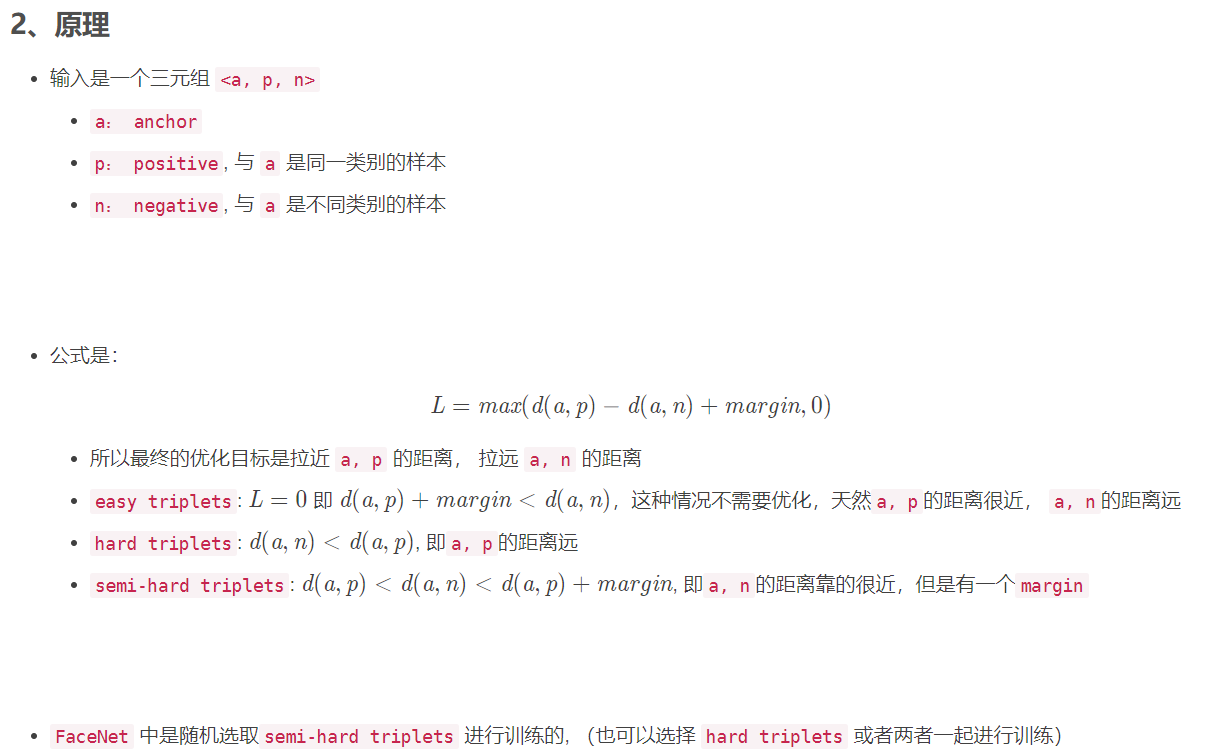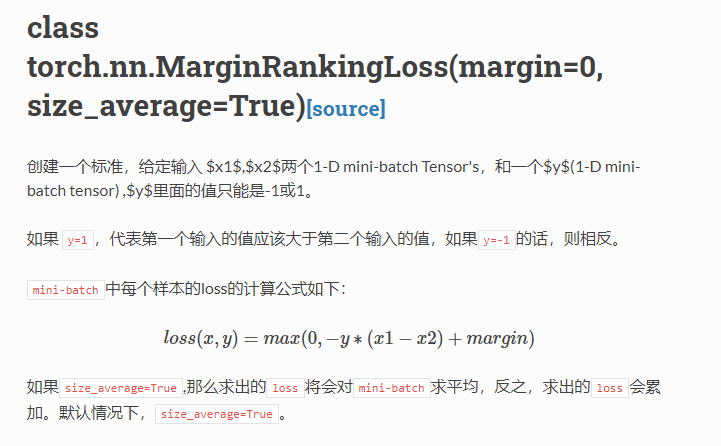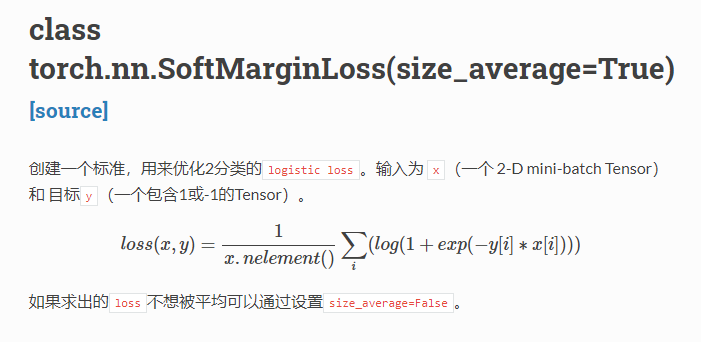triplet-loss学习
一些参考资料:

三元组怎么挑选?
batch的形成/PK取样
随机的从dataset中取样P个人、每个人取K张图片,比如P=16,K=4,则一个batch中有16*4=64张图片。
构建三元组
由上面得到一个batch中的图片都经过网络提取特征,得到64个特征。接下来构建三元组:
- 把每一个图片都当成anchor,总共可以选出64个三元组(其实按照排列组合可以选出很多三元组的,In defense of triplet loss这篇文章就只构建有代表性的64个三元组)
- 每个三元组的anchor选定后,positive从K-1个中选一个与anchor特征距离最远的样本,negative从P*K-K个中选一个与anchor特征距离最近的样本,这样子对这个anchor来说,选出来的positive和negative都是最困难的。这样组建了P*K个三元组,计算出P*K个triplet loss,把这些loss取平均进行反传。
数据集迭代的过程是按照person id来循环的,假设数据集有751个id,一个batch取掉了16个id,这样经过int(751/16)个batch就循环了一次(一个epoch),接下来把id的顺序打乱,进行下一轮迭代(下一个epoch)。
训练方法
offline
- 训练集所有数据经过计算得到对应的
embeddings, 可以得到 很多<i, j, k>的三元组,然后再计算triplet loss - 效率不高,因为需要过一遍所有的数据得到三元组,然后训练反向更新网络
online
- 从训练集中抽取
B个样本,然后计算B个embeddings,可以产生 B*B*B个triplets(当然其中有不合法的,因为需要的是<a, p, n>) - 实际使用中采用此方法,又分为两种策略 (是在一篇行人重识别的论文中提到的 In Defense of the Triplet Loss for Person Re-Identification),假设 B = P*K , 其中
P个身份的人,每个身份的人K张图片(一般K取4)Batch All: 计算batch_size中所有valid的的hard triplet和semi-hard triplet, 然后取平均得到Loss。- 注意因为很多
easy triplets的情况,所以平均会导致Loss很小,所以是对所有 valid 的所有求平均。 - 可以产生 P K ( K − 1 ) ( P K − K ) 个
tripletsPK个anchorK-1个positivePK-K个negative
- 注意因为很多
Batch Hard: 对于每一个anchor, 选择距离最大的d(a, p)和 距离最小的d(a, n)- 共有 P K个 三元组
triplets
- 共有 P K个 三元组
margin的选择?
当 margin 值越小时,loss 也就较容易的趋近于 0,于是 Anchor 与 Positive 都不需要拉的太近,Anchor 与 Negative 不需要拉的太远,就能使得 loss 很快的趋近于 0。这样训练得到的结果,不能够很好的区分相似的图像。
当 margin 值越大时,就需要使得网络参数要拼命地拉近 Anchor、Positive 之间的距离,拉远 Anchor、Negative 之间的距离。如果 margin 值设置的太大,很可能最后 loss 保持一个较大的值,难以趋近于 0 。
torch.nn.MarginRankingLoss()

两个N维向量之间的相似度,用于排序任务,该方法计算两组数据之间的差异,返回一个N*N的loss矩阵

y=1,希望x1比x2大,当x1>x2时,不产生loss
y=-1,希望x1比x2小,当x2>x1时,不产生loss
1 | x1 = torch.tensor([[1], [2], [3]], dtype=torch.float) |
torch.nn.SoftMarginLoss()

二分类logistic损失:

其中,x.nelement()是平均值,y=1或-1
1 | inputs = torch.tensor([[0.3, 0.7], [0.5, 0.5]]) |
1 | idx = 0 |

原文作者: 贺同学
原文链接: http://clarkhedi.github.io/2020/12/13/triplet-loss-xue-xi/
版权声明: 转载请注明出处(必须保留原文作者署名原文链接)